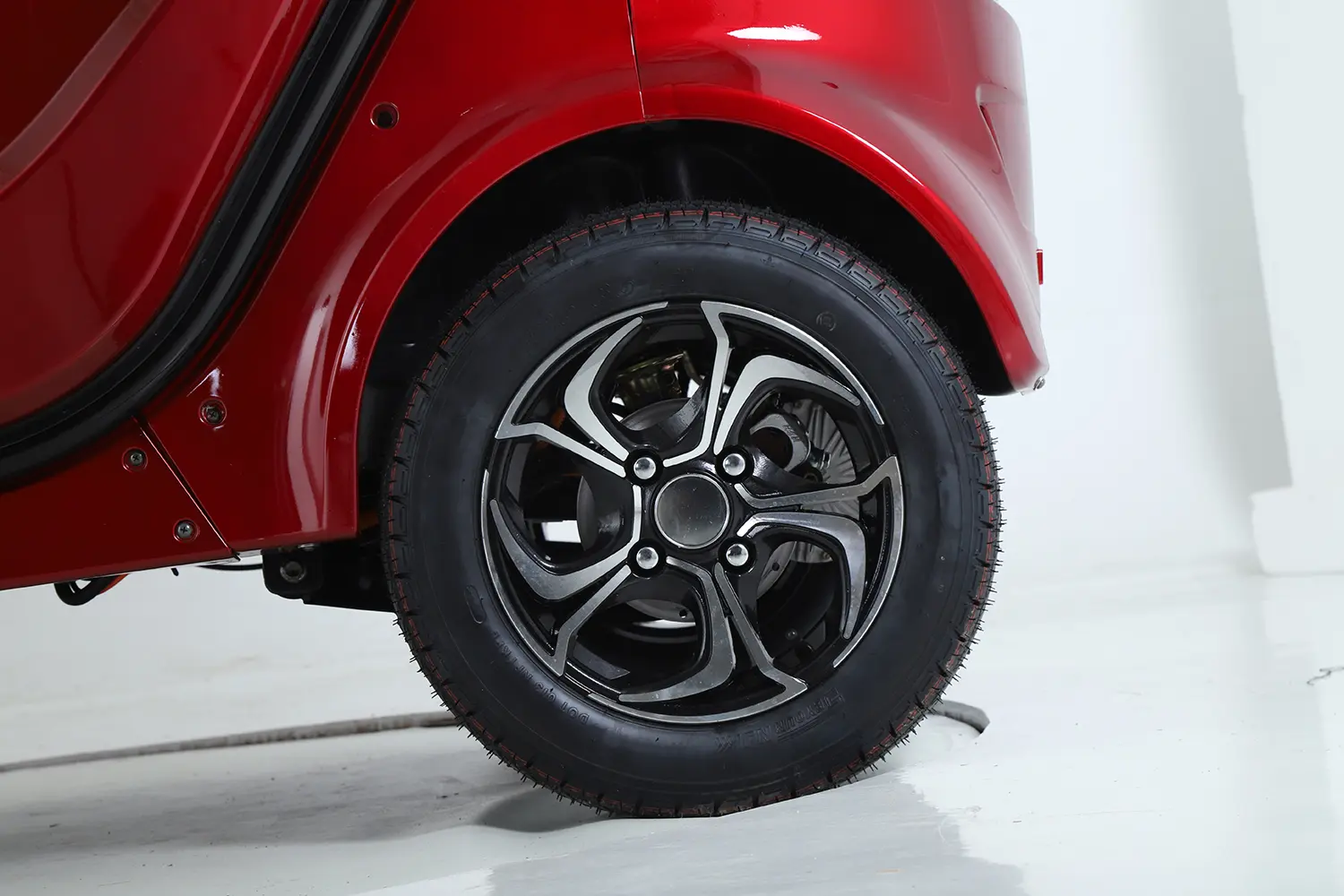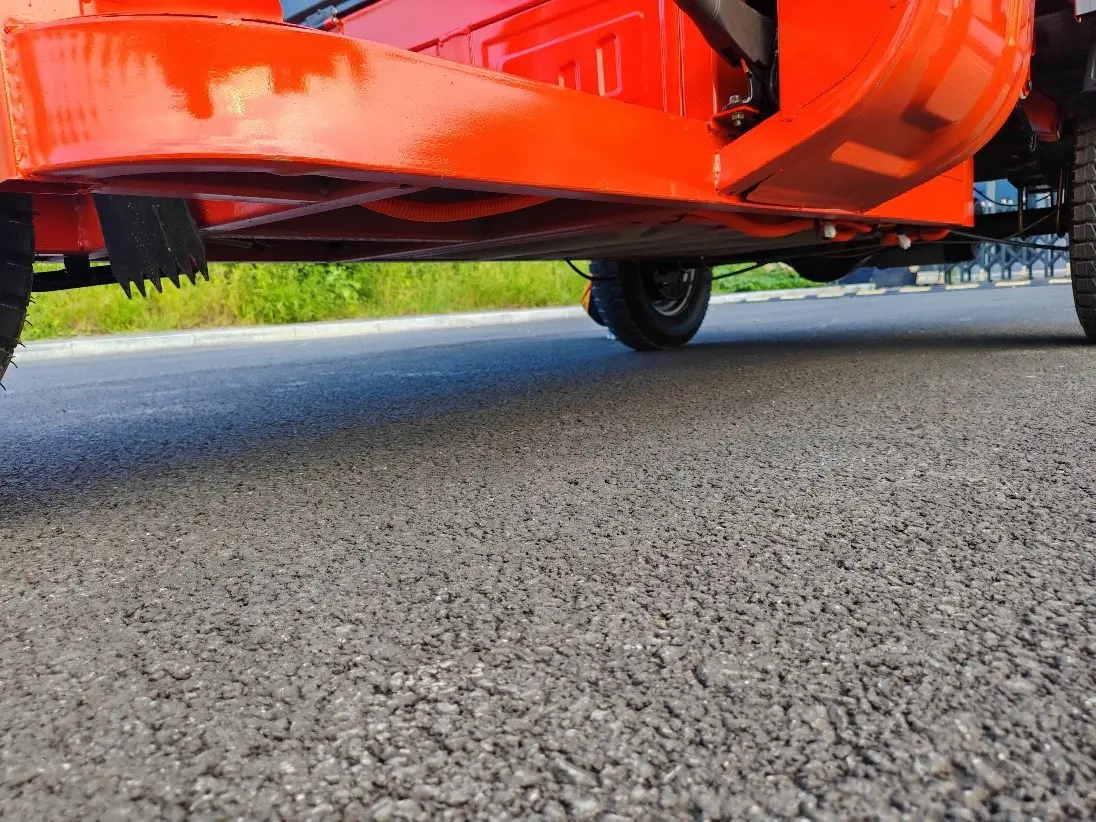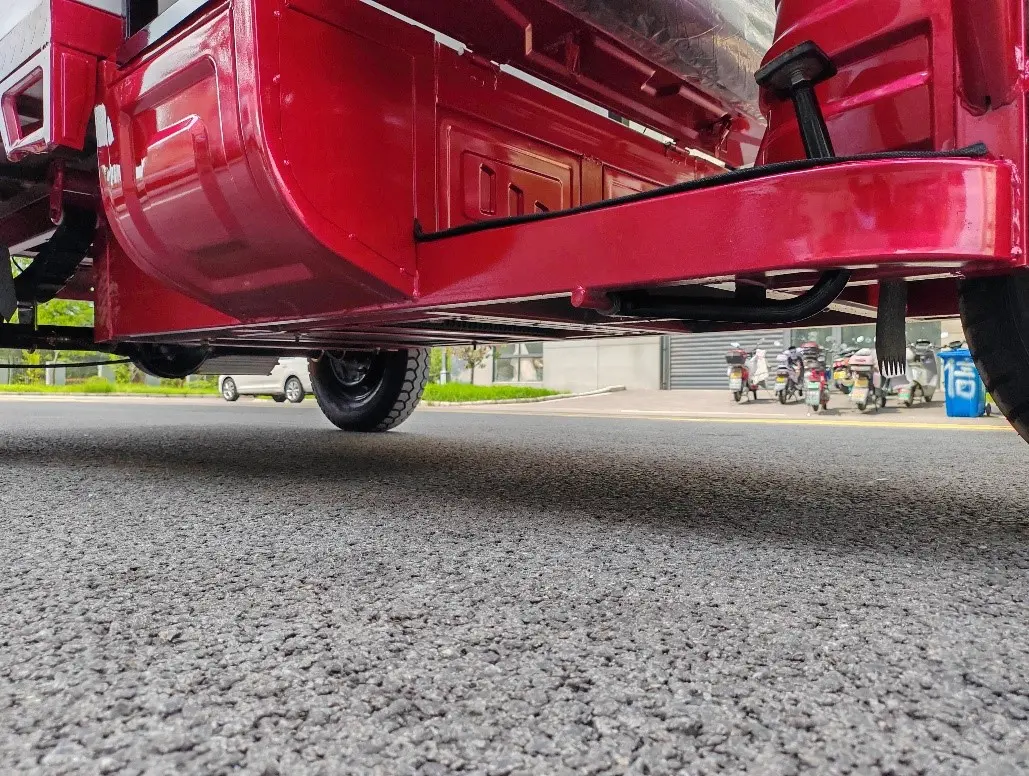The world of transport and logistics is changing fast. If you’re a business owner like Mark Thompson, running a delivery service or managing a fleet, you know that efficiency and reliability are everything. The rise of the electric wheel isn’t just a trend; it’s a fundamental shift in how we power movement. This technology is the beating heart of modern electric vehicles, from small delivery trikes to massive mining trucks. This article is for you, the decisive leader who needs to understand the technology that will power your fleet into the future. We’ll explore what an electric wheel is, where it came from, how it benefits your business, and what to look for in an OEM partner to ensure your investment pays off.
What Exactly Is an Electric Wheel and How Does It Work?
At its core, an electric wheel, often called a hub motor, is a self-contained unit that places an electric motor directly inside the hub of a wheel. Think about that for a moment. Instead of a large, central engine connected to the wheels through a complex system of gears, shafts, and axles, the power source is integrated right where the action happens. This elegant design simplifies the entire vehicle, making it lighter, more spacious, and remarkably efficient.
The principle is straightforward: the battery sends electricity through a controller, which then powers the motor in the hub. This motor uses electromagnets to spin the wheel directly. By eliminating the traditional drivetrain, you cut down on the number of moving parts that can break, wear out, or lose energy through friction. This means more of the battery’s power goes directly into moving your cargo or passengers, which translates to better range and lower running costs. For anyone managing a fleet, fewer mechanical failures and higher efficiency are music to their ears.
This technology is not just for a small electric bike; it’s scalable and robust. The same principle that powers a personal bicycle can be engineered to move multi-ton earthmoving equipment. The key is in the quality of the components and the engineering of the system, which is where a good manufacturing partner becomes essential.
Where Did the Idea of the Electric Wheel Come From?
The concept of putting a motor in a wheel might seem futuristic, but its roots go back nearly a century. The credit for pioneering this technology on a massive scale goes to an American inventor named R.G. LeTourneau. In the 1920s and 30s, LeTourneau was a visionary in the earthmoving industry, constantly looking for ways to build bigger, more powerful machinery. He realized that traditional mechanical drivetrains were a major limiting factor.
His solution was revolutionary: the diesel-electric drive system. LeTourneau designed massive machines with a central diesel engine that didn’t drive the wheels directly. Instead, the engine powered a generator, creating electricity. This electric power was then sent via cable to individual electric motors located inside each giant wheel. This system, known as the LeTourneau electric wheel, allowed for incredible power, traction, and control on a scale never seen before. His machines could move mountains, quite literally, and became indispensable in large-scale construction and military applications during World War II.
What LeTourneau proved was that the electric wheel concept was not only viable but superior for heavy-duty applications. It offered more torque, better maneuverability, and fewer mechanical weak points than any standard drivetrain. Today, we’ve refined this concept, replacing the giant diesel generator with advanced batteries, but the fundamental genius of LeTourneau‘s idea remains the foundation for modern oem off-highway electric vehicles.

How Does an Electric Wheel Motor Compare to a Traditional Engine?
For a business owner, the bottom line is always a key consideration. When you compare an electric wheel motor to a traditional internal combustion engine, the advantages in efficiency and maintenance become crystal clear. A traditional engine is a complex piece of machinery with pistons, cylinders, spark plugs, and a cooling system, all of which require regular and often costly maintenance.
An electric motor, on the other hand, has only one primary moving part: the rotor. This drastic reduction in complexity means fewer things can go wrong. There are no oil changes, no spark plugs to replace, and no exhaust systems to maintain. This translates directly into less downtime for your fleet and lower operational costs over the vehicle’s lifespan.
Let’s break it down in a simple table:
| Feature | Electric Wheel Motor | Traditional Engine |
|---|---|---|
| Efficiency | ~90% energy conversion | ~20-30% energy conversion |
| Maintenance | Minimal (bearings, brakes) | High (oil, filters, plugs) |
| Complexity | Very low (few moving parts) | Very high (hundreds of parts) |
| Noise Level | Nearly silent | Loud |
| Emissions | Zero (at point of use) | High (CO2, NOx, etc.) |
| Instant Torque | Yes, for quick acceleration | No, requires revving |
The efficiency statistic is particularly striking. Up to 90% of the electric power from the battery is converted into rotational force, whereas a gas or diesel engine wastes the majority of its energy as heat. This superior efficiency is why a well-designed reliable electric passenger tricycle can offer such an impressive range and performance on a single charge. It’s not just about being green; it’s about being smarter with your energy and your money.
What are the Key Components of a Modern Electric Hub Drive System?
While the concept is simple, a modern electric wheel system is a product of sophisticated engineering. As a factory owner, I believe it’s crucial for my partners to understand the quality that goes into the build. There are four main components that work together to deliver reliable power.
- The Stator: This is the stationary part of the motor. It consists of copper windings that create a rotating magnetic field when electricity passes through them. The quality of the copper and the precision of the winding are critical for the motor’s efficiency and longevity.
- The Rotor: This is the rotating part of the motor, attached to the wheel‘s hub. It contains powerful permanent magnets. The magnetic field from the stator interacts with these magnets, forcing the rotor to spin. The strength and quality of these magnets directly influence the motor’s torque and power.
- The Bearings: High-quality bearings are essential to ensure the wheel spins smoothly with minimal friction. In a cargo application, these bearings must be robust enough to handle heavy loads and constant use without failing. This is an area where cutting corners can lead to premature failure.
- The Controller: This is the brain of the operation. It’s a small computer that takes input from the throttle and manages the flow of electricity from the battery to the motor. A sophisticated controller can provide smooth acceleration, regenerative braking (which puts energy back into the battery), and protect the motor from overheating.
When these components are well-made and perfectly integrated, they create a seamless and powerful drive system. Understanding this helps you appreciate why not all electric vehicles are created equal. The quality of the internal components is what separates a reliable workhorse from a vehicle that will cause you headaches.

Why is the Right Tire and Wheel Size So Important for Performance?
The motor provides the power, but the tire is what connects that power to the road. Choosing the right tire and wheel size is not a minor detail; it’s a critical decision that impacts range, stability, load capacity, and rider comfort. A common mistake is to overlook this aspect when evaluating an electric vehicle.
For instance, a wider tire generally provides a larger contact patch with the ground, which can improve stability and traction, especially when carrying heavy loads or navigating uneven surfaces. This is a key consideration for a heavy-duty electric cargo tricycle. However, a wider tire can also create more rolling resistance, which may slightly reduce the vehicle’s maximum range. It’s all about finding the right balance for the intended application.
The diameter of the wheel (e.g., a 16-inch vs. a 20-inch wheel) also plays a significant role. Larger wheels can roll over obstacles more easily and maintain speed more efficiently, making them great for passenger transport. Smaller, more robust wheels might be better suited for low-speed, high-torque cargo applications where maneuverability in tight urban spaces is key. A knowledgeable manufacturer will offer different options and guide you to the best choice for your specific operational needs.
Can an Electric Wheel Design Handle High Capacity Loads?
This is a question I hear often from potential partners like Mark, and it’s a valid one. The image of a lightweight electric bike can make people wonder if the technology is tough enough for commercial use. The answer is an emphatic yes. The load capacity of an electric wheel system is not determined by the concept itself, but by the quality of its build and the strength of the surrounding vehicle frame.
The principles that LeTourneau used for his massive earthmoving machines still apply. To handle a high load, you need a robust motor designed for high torque, not just high speed. The axle, bearings, and the wheel rim itself must be constructed from high-strength material like reinforced steel or durable alloys. The entire frame of the tricycle must be engineered to support the specified weight without flexing or fatigue.
At our factory, we don’t just assemble parts; we engineer systems. We use one-piece stamping technology for vehicle frames to maximize strength and durability. We select motors and build wheels specifically designed for the demands of a fully loaded cargo or passenger tricycle, day in and day out. When properly engineered, an electric wheel isn’t a weak point; it’s the core of a very strong and capable machine.

What Should You Look for in an OEM Off-Highway Electric Vehicle Partner?
For a business owner sourcing vehicles from overseas, choosing the right partner is even more important than choosing a specific product. Your success depends on the reliability, honesty, and expertise of the manufacturer. As someone on the other side of that conversation, I can tell you what separates a simple supplier from a true oem off-highway partner.
First, look for expertise and transparency. A good partner will be eager to explain their technology, their production process, and their quality control measures. They should be able to answer your tough questions about motor specifications, battery chemistry, and material sourcing. Second, evaluate their ability to understand your needs. Do they listen to your requirements for load capacity, range, and local regulations? A factory just trying to sell a standard unit may not be the best fit. You need a partner who can work with you.
Finally, consider their track record and commitment to after-sales support. Ask for references, inquire about their spare parts availability, and discuss warranty terms. A long-term relationship is built on trust and the assurance that you will be supported long after the sale is complete. As an experienced reputable electric tricycle factory, we pride ourselves on building these lasting relationships, because we know our success is tied directly to yours.
How Do You Ensure the Battery and Range Meet Your Urban Operation Needs?
The battery is the fuel tank of your electric vehicle, and its performance is a top concern for any fleet manager. The advertised range is a good starting point, but you need to understand the factors that affect it in the real world, especially in a demanding urban environment.
The two main types of batteries used are lead-acid and lithium-ion. Lead-acid is a mature, less expensive technology, but it’s heavier and has a shorter lifespan. Lithium-ion is lighter, offers more power and a longer life, and is the preferred choice for most modern commercial applications. When discussing options with a manufacturer, ask about the battery’s chemistry, its capacity (measured in amp-hours or kilowatt-hours), and its expected number of charge cycles.
Real-world range is influenced by three things: load, terrain, and temperature. A heavy load or hilly terrain will require more power and reduce the distance you can travel. Extreme cold can also temporarily decrease a battery‘s performance. A good manufacturer will be honest about these variables and help you choose a battery capacity that provides a comfortable buffer for your daily routes, ensuring your mobility solution doesn’t leave your drivers stranded.
Are Front Wheel or Rear Wheel Drive Systems Better for Tricycles?
The placement of the drive wheel—whether it’s a front wheel or a rear wheel—has a significant impact on a vehicle’s handling, traction, and suitability for different tasks. While a front-wheel drive system can be found on some conversion kits for a two-wheeled bike, it is not ideal for three-wheeled cargo and passenger vehicles.
For electric tricycles, a rear–drive system is overwhelmingly superior. The reason is simple: traction. When you load a tricycle with cargo or passengers, the weight is concentrated over the rear axle. This increased weight pushes the rear wheels down, giving them a much better grip on the road. A rear-drive system leverages this weight to provide excellent traction, preventing wheel slip during acceleration, especially on hills or wet surfaces.
A front-wheel drive tricycle, by contrast, would have less weight over its drive wheel, making it prone to spinning out, particularly when starting from a stop with a heavy load. For the safety, stability, and performance required in a commercial application, a rear-wheel drive design is the professional standard. It ensures the power from your electric wheel is transferred to the ground effectively and safely.
How Can Customization of an Electric Wheel System Benefit My Fleet?
One of the greatest advantages of working directly with an OEM factory is the potential for customization. A one-size-fits-all approach rarely works in the diverse world of logistics and transport. The ability to tailor your vehicles to your specific needs can provide a significant competitive advantage.
Customization can start with the electric wheel system itself. Do you need more torque for hilly routes or higher speed for long, flat deliveries? A good manufacturer can offer motors with different power ratings to match your operational profile. Beyond the motor, you can often customize the battery capacity to find the perfect balance between range, weight, and cost.
The customization extends to the entire vehicle. Perhaps you need a specific cargo box size, shelving, or even specialized equipment. For example, we’ve developed specialized applications like refrigerated transport for clients in the food delivery business. Having a compatible system where every accessory and component is designed to work together ensures maximum efficiency and reliability. This level of personalization is something you can only get by collaborating with a flexible and capable manufacturing partner.
Key Takeaways
As you plan the future of your fleet, remember these key points:
- Simplicity is Strength: The electric wheel simplifies the vehicle by integrating the motor into the hub, leading to higher efficiency, fewer breakdowns, and lower maintenance costs.
- Proven Technology: The concept isn’t new. It was pioneered by LeTourneau for heavy-duty military and earthmoving machines, proving its robustness and power.
- Components Matter: The quality of the motor’s internal components—the stator, rotor, and bearings—and the sophistication of the controller determine the vehicle’s performance and longevity.
- Balance is Key: The right tire and wheel size must be chosen to balance range, stability, and load capacity for your specific application.
- Rear-Drive for Tricycles: For safety and traction under load, a rear-wheel drive system is the professional standard for commercial electric tricycles.
- Choose a Partner, Not a Supplier: Look for an oem off-highway manufacturer with deep expertise, a commitment to quality, and a willingness to work with you to build the perfect vehicle for your business needs.
Post time: 06-09-2025




